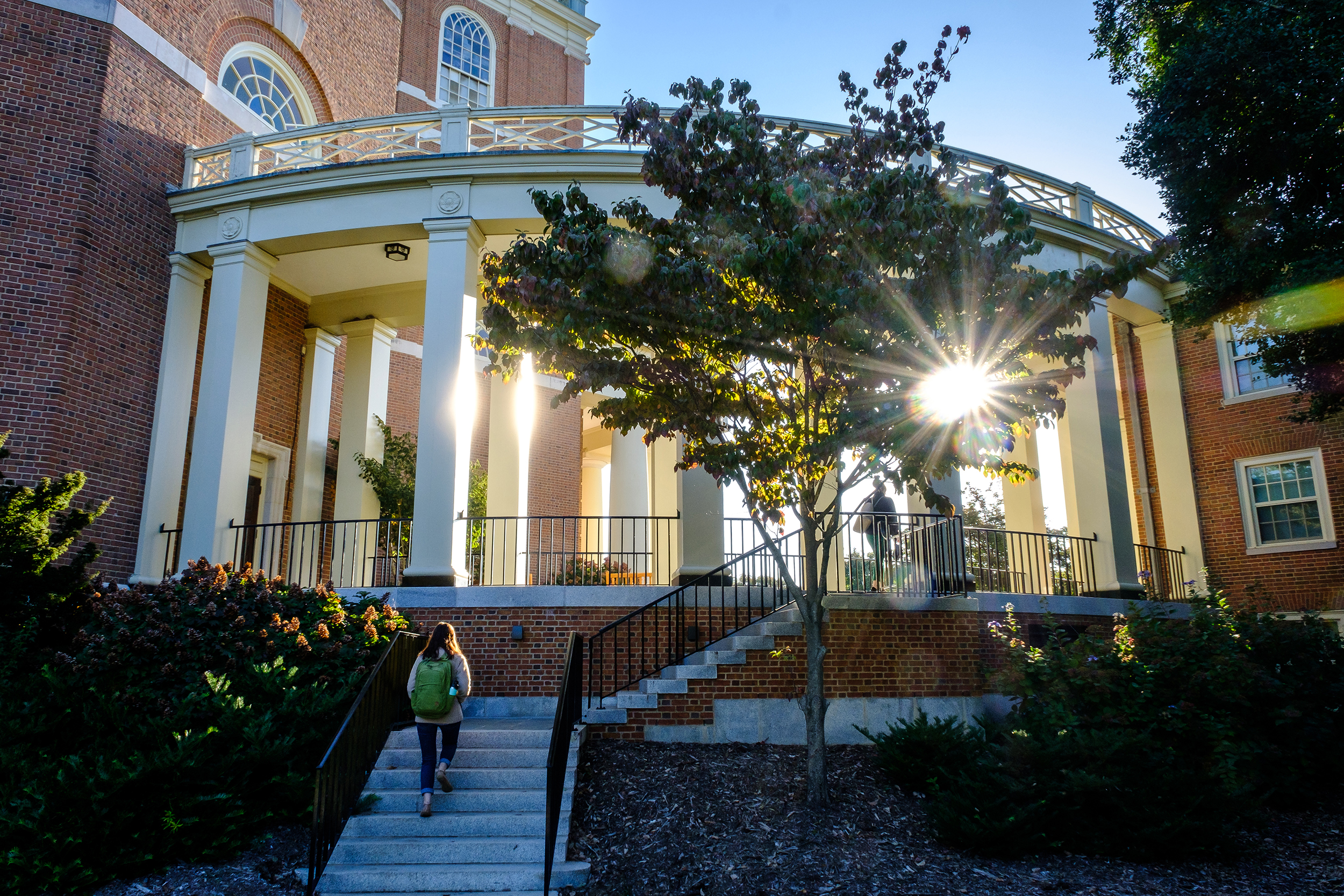Dressing the part
When Caroline Dignes designs costumes for a play, she helps create a world for actors and audience alike. Whether it’s Moliere’s “Imaginary Cuckold,” outfitted with corsets, waistcoats and pantaloons or 1960s college students in bell-bottoms and tie-dye prints, the Wake Forest senior starts with the script. Together with the director, she explores the characters’ personalities, relationships to one another, ages and socio-economic status, and then sets out to create a wardrobe to match.
“When you think about it,” says Dignes, “when we wake up and dress ourselves in the morning, we dress in a way we think will best represent ourselves to other people. It’s the same thing with characters in a play.”
For Moliere’s “Imaginary Cuckold,” first performed in 1660, Dignes researched styles from the 17th century. “The period costumes are a visual treat and part of the fun of reviving a Moliere piece,” says Associate Professor of Theatre J.K. Curry, the play’s director. “As a theatre historian I enjoy seeing an old play come alive in performance, especially when we can give an audience at least a hint of what the play might have looked like in its own time.”
Once the background research is complete, Dignes creates line drawings of her costume designs. Next, the focus becomes fabrics. For “Imaginary Cuckold,” she turned to interior upholstery fabrics for their wide range of motifs, patterns, colors and drape. “The hardest part about designing is considering the group of characters as a unit—choosing colors that work together yet finding ways to make one character stand out on the stage or using a stiff fabric for a stern character. Costumes can also help the audience draw connections between one character and another. It’s like putting together pieces of a puzzle.”
To hone her skills, Dignes worked with mentors in the theatre department to learn more about the role of colors and fabrics in theatre productions. She completed an independent study with theatre professor Mary Wayne-Thomas on fabric manipulation and dyeing techniques, and spent a summer studying textile production techniques and textile properties at Central Saint Martin’s College of Art and Design in London. For two summers, she worked as an apprentice at the Santa Fe Opera—most recently in the dye shop.
A presidential scholar in theatre, Dignes has worked in the University’s costume shop since her first year at Wake Forest. She learned to sew from her mother and was making clothes in the third grade. Her work in the shop gives her hands-on training that brings extra skills to her design experience. Five of the nine costumes for the play have been sewn from scratch. The others have been put together using existing pieces—changing cuffs and buttons to fit the production’s style.
Dignes, who is majoring in anthropology and studio art, says she chose Wake Forest over going to a conservatory because she was seeking a broader educational experience.
“Caroline’s studies help her to look at costume design culturally while providing her with the art skills that help her express her ideas,” says Wayne-Thomas. “She uses a wide lens for the design process.”
After graduation, Dignes says she hopes to pursue her interest in textiles and costume design with a focus on sustainable fabrics.
Categories: Arts & Culture, Experiential Learning, University Announcements
Media Contact
Wake Forest News
media@wfu.edu
336.758.5237




